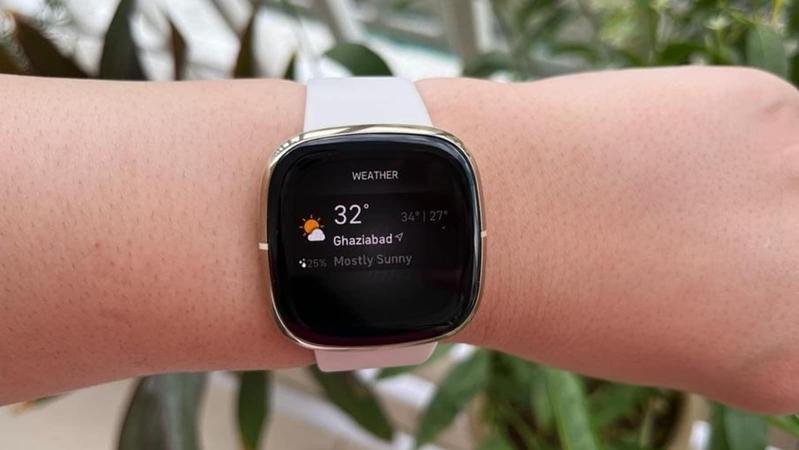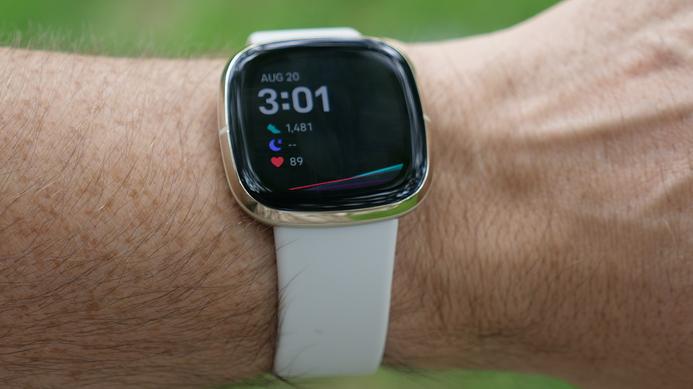
By cuterose
Fitbit Sense Review: Most expensive Fitbit is familiar—takes two steps forward
You would have to be real serious about your fitness and wellness tracking to be buying a smartwatch with a price tag as much as the Fitbit Sense, the most expensive Fitbit wearable you can currently buy in India. It costs around ₹22,999, compared to the Samsung Galaxy Watch 4, priced at around ₹26,999 and the Apple Watch SE, which costs around ₹29,990. Potential buyers comparing Fitbit Sense and Apple Watch SE will have to choose very carefully.
Fitbit Sense Vs Apple Watch SE: You’re wondering about this, aren’t you?
The highlight features for which you’d likely be considering the Fitbit Sense include stress management, skin temperature logs, blood oxygen or SpO2 monitoring, the electrocardiogram (ECG) readings, menstrual health tracking, very accurate heart rate logs and the Alexa assistant sitting on your wrist. To be fair, the Fitbit Sense has a serious advantage over the Apple Watch SE purely if you are an Android phone user—it plays well with Android and iPhone, thanks to the neat and further improved Fitbit app. What the Fitbit Sense does miss out in comparison with the Apple Watch SE is built-in functionality for fall detection, a cellular variant if you want to leave the watch behind, noise detection, emergency SOS, walky-talky with other Apple Watch users and the sensors that help you time hand wash to 20 seconds.
The Fitbit familiarity is very much there, but that’s good
First things first, the Fitbit Sense looks every bit worth the money that you’d be paying for it. Your choices are the darker combination of carbon and graphite with the stainless steel finish or Soft Gold stainless steel with the Lunar White combination. Unlike an Apple Watch or for that matter most smartwatches that you’d have seen or used, the Fitbit Sense stands out because there is no physical button or dial on any of the side spines. Instead, it is a capacitive touch key which takes some getting used to but is quite intuitive to use with the vibration feedback. This can be configured too for double press. It is not exactly square, and most certainly not round. Very similar to the curvaceous designs that the siblings have, including the Versa range. You’ll know it is a Fitbit.
Different band sizes and the attention to detail
You’d be getting this with the classic wrist band, very much like the sport bands that the Apple Watch and indeed most smartwatches bundle too. It is quite resistant to dust, water rolls off it and sweat doesn’t make it sticky. In fact, even though the Fitbit Sense that arrived as my review sample had the Lunar White band, it still didn’t catch dirt and smudges the way a white watch band would, typically. The box contains the small and the large size band options, and that’s definitely very convenient.

Also Read: Realme Book Slim review: Off to a good start
The perplexing thing about Fitbit chargers
Yes, there is this thing about Fitbit smartwatch chargers that really rankles almost every time a new smartwatch pops over for a review. It seems that none of the older chargers work with the newer Fitbit smartwatches. If you are upgrading from one Fitbit watch to another, you’ll simply have a new charger. Versa to Sense? New charger. So many years, and it is bewildering how many iterations, designs and variations of chargers a smartwatch family that’s evolving could need. Apple Watch, for instance, has had the same charger design for years and all versions. Fitbit is creating a complication of clutter for users, particularly loyalists. And then there is the general sense of wastage. All this will end up in the landfills at some point in their lives, simply adding to the discarded tech that’s filling up our garbage. It is time Fitbit knuckles down on one charger design and build watches around that. Not the other way round.
The matter of performance: Consistent and occasionally erratic
The Fitbit Sense gets you a 1.58-inch OLED touch display to interface with. The advantages of OLED are there to see from the outset. Dark blacks, colours pop up nicely and the Always On display mode is still usable with around 3 days and a bit more of battery life. The touch response is quite good, and I almost never had to take a second attempt at a swipe. In fact, there is a certain smoothness with which one app screen slides into the next. Occasionally, an app would take just that little bit longer to load, but really, we couldn’t put our finger on why that would be—the very next time, the same app would load much quicker. During our time using the Fitbit Sense, there were a few firmware updates at intervals, yet this behaviour has remained noticeable. It isn’t something most folks would notice, but smartwatches costing more than ₹20,000 shouldn’t be doing this.
Health, wellness and Fitbit’s brand recall
The Fitbit Sense really didn’t have an option to mess about. Not with that price tag. It has got a legacy to carry forward, and there is no doubt it does the best it can with what’s made available. Fitbit OS 5.2 that runs on the Sense retains the very underpinnings of Fitbit OS as it evolved a few years ago. The functionality, the navigation and the simplicity hasn’t been compromised. That also means it remains restricted in some ways, such as limited tinkering with notifications, for instance. Yet, the software has allowed Fitbit to give this an even better heart rate sensor that takes wider readings for accuracy, advanced sleep monitoring, the ECG sensor, the electrodermal activity (EDA) sensor to detect sweat and calculate stress levels as well as the now much desired blood oxygen monitor and the skin temperature sensors. Basically, the underside of the Fitbit Sense is a busy place with a whole gamut of sensors doing their thing. What helps you make sense of all this, no pun intended, is the Fitbit companion app for phones. It’s the neatest app for any wearable out there, this side of the Apple Watch’s Watch, Fitness and Health apps.
This Fitbit has exactly what you expected, and then some more
There are some genuine upgrades that the Fitbit Sense brings along, including the EDA scanning, the new PurePulse 2.0 heart rate tracking sensor, sleep stages and the skin temperature sensing as well. What hasn’t changed is the simplicity and familiarity of Fitbit OS over the years, and we have to say that would have taken a lot of restraint on Fitbit’s part to not fall for the urge to make large-scale changes every year. That also breads familiarity, which fortunately or unfortunately, still means the Fitbit Sense doesn’t exactly look like a revolutionary new watch that you probably were expecting. For Android phone users, things don’t get much closer than this to the lofty heights that the Apple Watch has set for others to follow.









